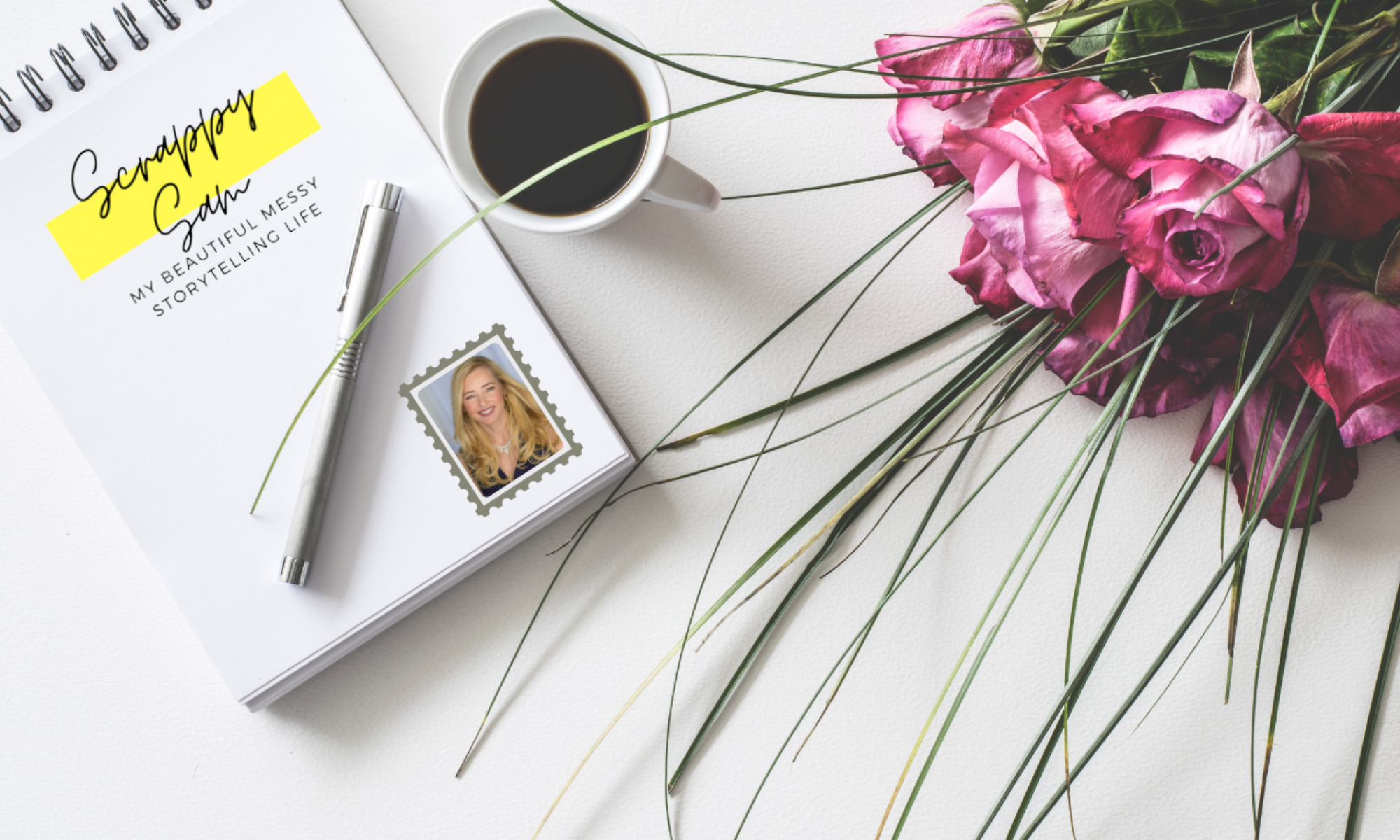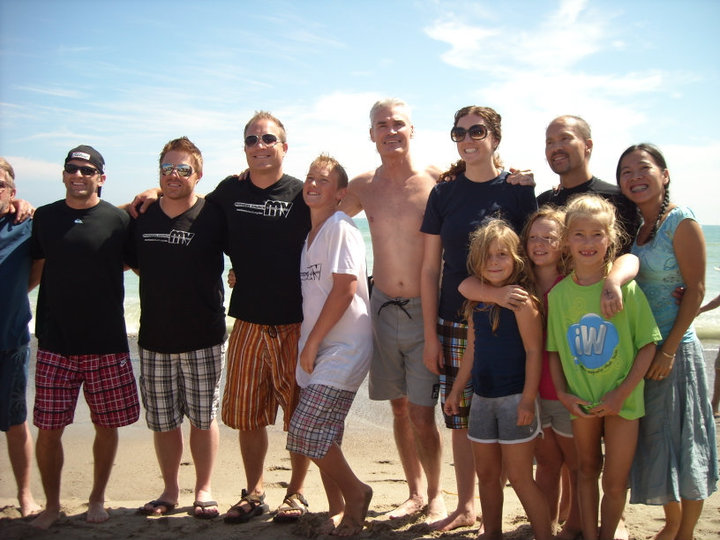I have only been punched twice in my life. My initiation to aggression was at a Cult concert at the tender age of eighteen.
Exiting the amphitheater, a random drunk decided I was in his way, and launched a bomb to my right eye. Knocked off my high heels, I laid writhing on the ground and cried like the girl I am, as my friends defended my honor and a large brawl ensued.
I felt violated and angry that someone could be so abusive to a complete stranger, but the mosh pit and chaotic climate didn’t exactly exude peacemaking. Though my pride was injured, I was able to process and come to terms with the assault.
The second time I took a hit was far more traumatic than my college experience, but just as unexpected. Almost twenty years later, serving at a local outreach center in a poor and downtrodden neighborhood, a little girl opened my eyes to the hidden realm of domestic abuse as I was thrust abruptly into an altercation.
We were painting the learning center that day, a large group of high school kids from our church youth group dedicating a three-day weekend to go serve in the community. Newly pregnant, I was relegated to the courtyard to avoid the fumes. My job was to paint all the doors which had been removed from their hinges. It seemed like an endless stack piled against the tree planter.
As I painted, a few little girls played nearby me and I bantered with them and tried out my limited Spanish. I pointed to my little bump, “bebe,” and they giggled and rubbed my belly. The girls were about six years old; one had dark pig tails and missing teeth (the distinct marks of a first grader), the other wore blue and for a small child had an air of sadness and maturity. The girl in blue spoke English while my little pig-tailed companion jabbered away happily in Spanish and had her friend translate for me.
Out of the blue, little pig-tails approached me, head down and leaned in for what I thought was a hug. I opened my arms wide and got the shock of my life. With all her might, she reeled back and punched me in the stomach.
Stunned and staggering backward, I could only whisper, “no, no, no,” as the little girl, with terror in her eyes, started crying. Her friend started scolding her in Spanish, and she only cried more. I asked what she was saying through my own tears, and the girl in blue translated, “She wants to know if she killed the baby.”
“What?” I asked.
“She wants to know if she is in trouble, because she tried to kill your baby,” whispered the little girl in blue, mortified at what her friend had done and scared I was going to haul them both off to the authorities.
My first reaction was to protect the baby in my womb. I ran for help. In big hiccuping sobs, I explained what happened. Dumbfounded, the director stood there in disbelief. Then moved into action, found another volunteer and the two of them tended to me. Slowly I moved from hysterical, nauseous, and light-headed to worn-out and emotionally drained. Ironically, I had an ultrasound scheduled the next day and after a call to the Dr., who reassured us that the baby was probably fine, they forced me to lie down on a sofa and I passed out.
While I was sleeping, the director hunted down the little girl and dropped in on her parents who lived in an apartment nearby. When confronted with the situation, the mother apologized profusely and pleaded for forgiveness, but the father, smirked and refused to comment. His defiant arrogance and lack of remorse suggested he was quite likely the model for her aggressive behavior.
The director realized all too quickly what was going on in their home and begged that he not hit the little girl or hurt her as punishment. She left their home frustrated and sad. How do you confront a child perpetrator who is also a victim in a vicious circle of domestic violence?
In all likelihood, the little girl had probably witnessed the abuse of a pregnant woman (possibly her own father hurting either her mother or sister). Statistically, domestic abuse rises in pregnancy… add in poverty, language barriers and rigid sex role stereotyping, and the ratios rise even higher. 48% of Latinas in one study reported that their partner’s violence against them had increased since they immigrated to the United States.[1] According to the Centers for Disease Control, every year in the United States more than 300,000 pregnant women experience some kind of violence involving an intimate partner, and about one-quarter of women in this country report having been sexually or physically assaulted by a spouse, partner, or boyfriend at some point in their life. Domestic violence is a leading cause of injury to American women between the ages of 15 and 44 and is estimated to be responsible for 20 to 25 percent of hospital emergency room visits by women.
The director of the learning center shared with me that domestic abuse and violence are common occurrences in the neighborhood. And sadly, it may only be the tip of the iceberg as to the real magnitude of the problem because of the very hidden nature of this type of abuse-one that women and children cover out of shame and desperation.
One year later, I decided to go back to the learning center. I took my three-month old healthy baby girl with me, snuggled in close in a baby sling. I wanted and needed to redeem this place that offers so much hope and assistance to a hurting community. Alas, my expectations were too high. As, I walked through learning center and saw the brightly colored walls that our high school kids had painted, I was initially encouraged. I paused and noticed the doors I had painted and cherished the scene of children happily studying and playing.
I sat down with a tutor and a small group of children and we worked on lessons. But one little boy seemed to be having problems. Distracted and belligerent, the boy refused to listen or obey the rules. Frustrated the tutor called for backup and eventually his mother was called. In walked a defeated woman. She tried to get her son to leave with her quietly but he began to get physical and started to kick and hit her. He was so out of control, it took two men to get him out of the room. Trying to protect the baby, I backed into the corner with the other kids. Fear and tension entered the room.
Once again, violence had broken into our midst. The children were able to settle down quickly, but I remained apprehensive. Their familiarity with physical aggression was unsettling to me. I felt like a foreigner in a dangerous land, unprepared and unarmed. Their toughness only magnified my insecurities. Growing up in a sheltered environment, I doubted whether I had anything to offer to these children that live in the face of constant danger.
Another little girl, seeing my discomfort grabbed my hand and asked me to play a game with her. As she beat me at Go Fish, for the tenth time and cackled like a hen at her own cunning, she turned and looked in my eyes. “Don’t worry about that mean boy. I like you. Will you come back and read to me again? We can be friends.”
“Ok, I said. “Friends.”
The child’s wisdom is this…there are no simple answers for what seems like an insurmountable crisis in our society. So, you do the best you can and hold on to God with double fisted faith. You survive. And in the presence of evil, you find a friend and beat them at Go Fish.
[1] Mary Dutton et al., Characteristics of Help-Seeking Behaviors, Resources, and Services Needs of Battered Immigrant Latinas: Legal and Policy Implications, 7 Geo. J. on Poverty L. and Poly 245 (2000).
Like this:
Like Loading...









